Using spherical glass silica grains, CoorTek has created a porous material through which light and fluids can pass. It has a higher temperature resistance than resin, and its resistance to heat and corrosion is superior to that of metals. The material boasts higher purity and thermal shock resistance than other ceramics such as alumina. It can be manufactured in various forms such as cylinders and plates with plate diameters up to 300 mm. Furthermore, complex shapes can be manufactured by fusing parts with quartz glass parts.
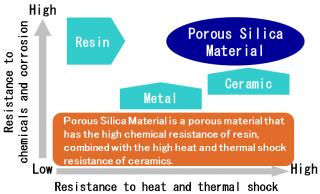
Porous Silica Material compared to other materials
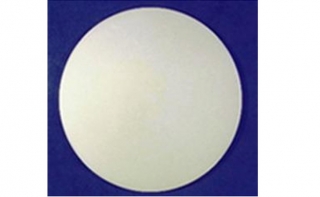
Porous Silica Material plate sample
- Resistance to heat and thermal shock
-
This tough, porous silica material is made from spherical, high-purity silica glass grains. It withstands heat and thermal shocks extremely well and it can be used in temperatures up to 1000°C while remaining stable in oxidized environments.
Unlike conventional ceramics, soda lime glass and borosilicate glass, our porous silica material will not suffer damage when undergoing rapid temperature changes from extremely hot to extremely cold.
- Thermal conductivity and expansion
-
Porous Silica Material has excellent insulation properties due to its extremely low thermal conductivity. Its heat expansion rate is also extremely low, therefore minimal size changes under temperature variations can be expected.
- Resistance to chemicals and corrosion
-
Our porous silica material resists corrosion from acids and alkalis, therefore it can be used in harsh environments that metals and resins cannot tolerate. However, the material will react to hydrofluoric acid, and phosphoric acid at temperatures of 300°C and higher.
- Light transmittance and diffusion
-
Since porous silica material is made from transparent silica glass grains, it can transmit light, which differs in characteristic from other porous but non-light transmitting ceramic materials such as alumina. The light transmitted is a diffused light owing to the porosity of the material, and the effect is a white but not transparent light.
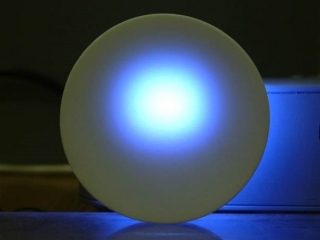
Light transmitted behind a porous silica material
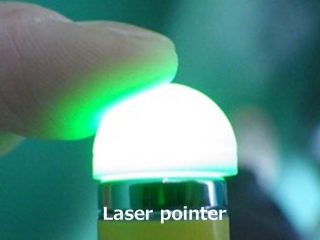
Laser illuminated below a porous silica material
(1)Total transmittance spectra
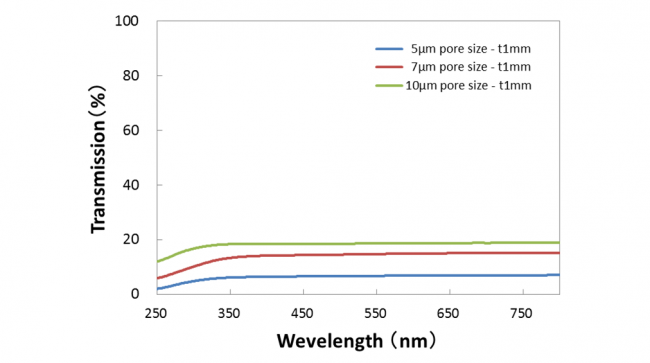
Total transmission of porous silica material
(2)Total reflectance spectra
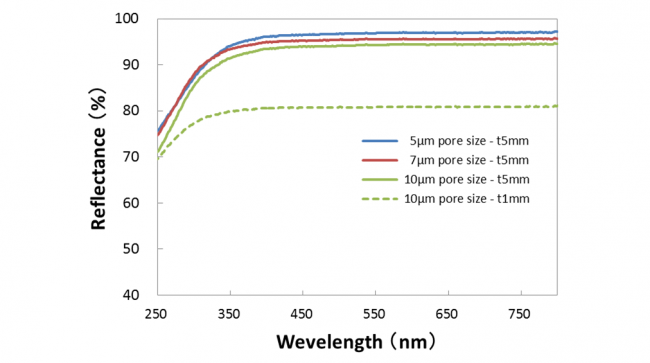
Total reflectance of porous silica material
(3)Angular dependence of transmitted light intensity
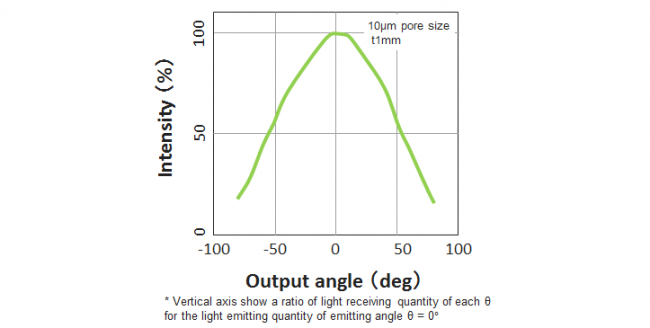
Angular dependence of transmitted light intensity
- Permeability
-
The porosity of our silica material allows liquids and gas to pass through it. For this reason, possible uses as filters or support materials are expected. We can manufacture pore diameters of 3-15 μm and a porosity ranging from 15-40 percent.
- Parts fused with quartz glass
-
Our porous silica material can be fused with quartz glass, making it possible to manufacture composite pieces that consist of dense and porous parts.

- Purity
-
Porous silica material has a very high-purity content since it is made from synthetic silica glass, which has very few impurities. By refining silica glass grains even further, it is possible to increase the purity level of the porous material.
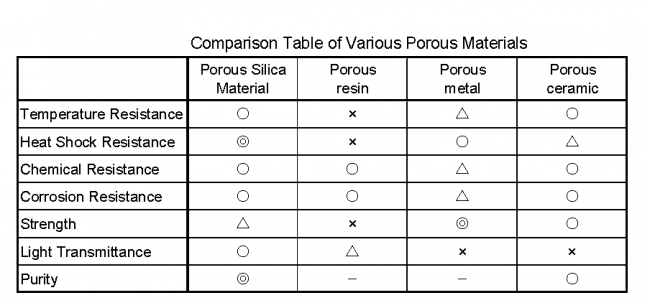
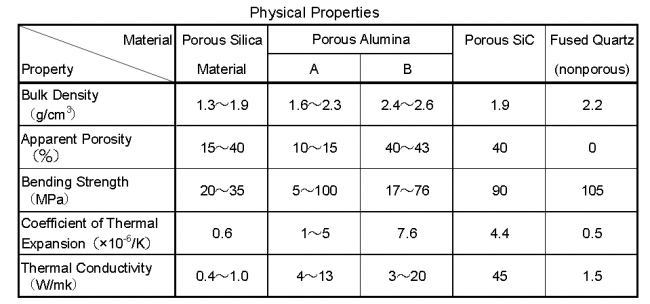

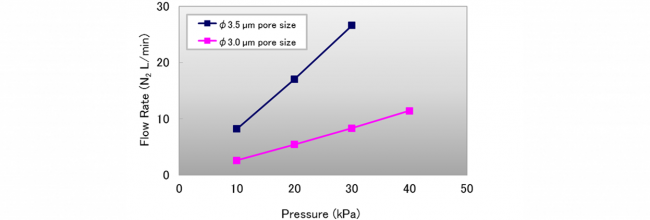
Sample Flow Characteristic(Ø20mm / ID 15mm-40mmL)
The manufacture of porous silica material involves sintering molded blocks of powder, which is the same as that for conventional ceramics such as alumina and zirconia. With this method, known as gel casting, the raw material is mixed and suspended in liquid to form slurry which is poured into a mold to set. This method does not require applying high pressure or heat, which is common when forming ceramic materials. This molding technique is capable of highly complex shapes, and it requires comparatively less machine processing and fabricating after casting.
In sintering, the molded block is not fused as is common with glass. Instead, the hardened slurry is put into the furnace to be sintered. Under high-temperature sintering, the particles become solidly fused to one another, giving the overall piece the strength to remain porous without worry of particles shedding.
By adjusting the grain size of the silica glass raw material, we can control the pore size and porosity of the material. Silica glass grains can be purified for a higher grade of high-purity material.
The pores in porous silica material are created by the spaces between the grains fused together. This makes it possible for liquids and gas to pass through the material.
In sintering, the molded block is not fused as is common with glass. Instead, the hardened slurry is put into the furnace to be sintered. Under high-temperature sintering, the particles become solidly fused to one another, giving the overall piece the strength to remain porous without worry of particles shedding.
By adjusting the grain size of the silica glass raw material, we can control the pore size and porosity of the material. Silica glass grains can be purified for a higher grade of high-purity material.
The pores in porous silica material are created by the spaces between the grains fused together. This makes it possible for liquids and gas to pass through the material.
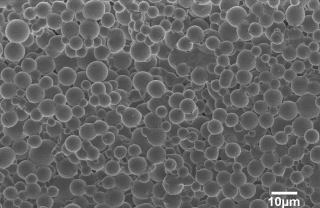
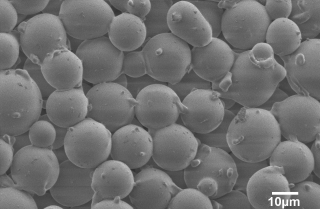
Filters, diffusers for vacuum breaking, vacuum chucks and catalyst supports, etc.
Glossary
- Open pore
- An open pore is a pore connected to the outside. A closed pore is not connected to the outside.
- Gelcasting
- Gel casting is one of the forming methods for casting, and it is an evolved technique. When compared to pressurized forming, gel casting is a low-cost manufacturing method.
- Slurry
- Slurry is a highly concentrated suspension liquid into which solid particles are mixed.
- Purity
- Purity is the ratio of the main element within a substance.
- Thermal shock resistance (Heat shock resistance)
- Thermal shock resistance refers to the ability of withstanding rapid thermal changes. It is often measured by rapidly cooling samples in water. The temperature at which strength rapidly declines is called the temperature of thermal shock resistance. It is indicated by the symbol "Δ Tc".
- Coefficient of thermal expansion
- The coefficient of thermal expansion refers to the degree of change in length and volume of a substance when it is subjected to an increase in temperature.







